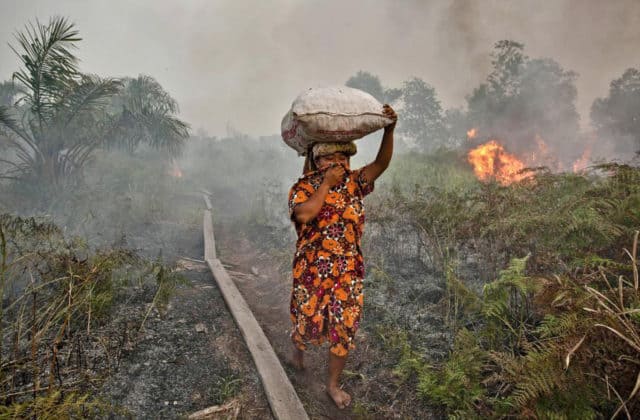The consequences for mankind and for the planet.
Centuries, decades, years, months, weeks and days, the world is constantly evolving, information is available to anyone who wants to read, hear, know and open their minds. For years, natural disasters have occurred around the world, scientists have proved and shown the masses what is happening, but many look away and call it conspiracy. Those who seek change and want to protect the world call it “Global Warming.”
“Global warming is the process of increasing the average temperature of the Earth’s oceans and atmosphere caused by massive gas emissions which increase the greenhouse effect.” The reason for the existence of this phenomenon is that human beings continue to exhaust the Earth’s resources for their own benefit without taking into account the consequences of their actions.

Burning fossil fuels, deforestation, using polluting energy sources and generally choosing a non-sustainable lifestyle, where nature is seen only as raw material for exploration, have led to Global Warming.
The gases emitted by Man that cause the greenhouse effect are carbon dioxide and methane, which are directly linked to the increase of the temperature that we have been experiencing since the middle of the XIX century.
The more we expect a miracle to happen, the worse it is for our planet. We have the blatant case of the Antarctic thawing, caused by global warming, that results in sea level rise in the coastal areas of all continents. Swamping, floods, and other sea related natural catastrophes destroy houses and cities in seconds.

According to scientists, we only have a decade left if we keep the amount of gas emissions (that cause greenhouse effect) which we produce today. This to the point of the consequences becoming irreversible. They also predict “an increase of 3 degrees Celsius in global temperature, sea level rise by 30 cm and large environmental changes, both for biodiversity and the oceans”.
Major climate disasters of 2018
Last year, the devastating effects of the world’s top 10 climate disasters hit at least €74.3 billion, according to a study by the non-governmental organization Christian Aid. 2018 was a year of hurricanes in the United States, from which hurricanes Florence and Michael stood out. Still in the US, there were also fires that killed dozens of people and destroyed thousands of homes that year, California being the most affected one.
As for Japan, it also suffered floods that lasted the entire summer and, without any rest, in autumn it was devastated by typhoon Jebi. In China, a tropical depression devastated part of the country, that also suffered floods, and the same happened in South India.

As for Europe, Argentina, Australia and South Africa there was drought. All this, it must be said, was caused by Man.
Such is the importance of this theme, that thousands of experts warn societies about what may come, because what is foreseen in the near future may indeed be even more problematic than one might imagine, and the first ones to feel the consequences will certainly be the poorer and more vulnerable communities. Scientists also warn of the rise of temperatures for 2019.
- Decrease the use of fossil fuels (gasoline, diesel, kerosene) and increase the use of biofuels (eg. biodiesel) and ethanol.
- Cars must be constantly regulated to prevent the burning of fuel in a deregulated way. The mandatory use of catalytic converter in exhaust pipes for cars, motorcycles and trucks.
- Installation of emission control systems for polluting gases in industries.
- Increasing energy production through clean and renewable sources: solar, wind, wave energy (force of the sea waves), tidal energy (utilization of the tide flow – up and down), biomass energy (energy stored in living beings (eg, plants) geothermal energy (internal heat of the Earth), water energy (utilization of the kinetic energy from the river).
- Avoid maximum energy production through thermoelectric plants, which use fossil fuels.
- Whenever possible, leave the car at home and promote car pulling for work, outings and such, as well as the use of public transport (if at possible) and ride the bike.
- Collaborate for the system of selective garbage collection and recycling.
- Recover of methane gas in landfills.
- Use natural lighting to the maximum within the domestic environments.
- Do not practice deforestation and do not start forest fires. On the contrary, more trees should be planted as a way to reduce global warming.
- Use of clean and advanced techniques in agriculture to avoid carbon emissions.
- Implementation of reforestation and afforestation programs, mainly in large urban centers.
- Construction of buildings with the implementation of energy-saving systems (using solar energy for water heating and cooling).
- Production and usage of solar energy: another option for reducing global warming.
References:






